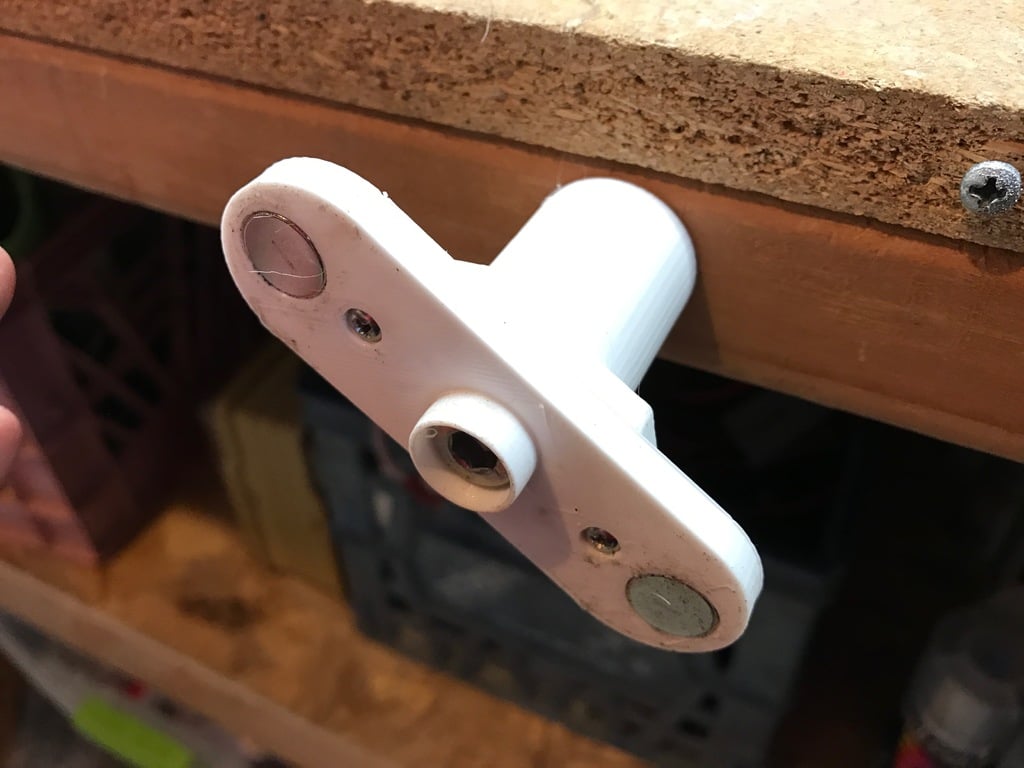
Lawnmower blade balancer
thingiverse
Balance your lawnmower blades using this simple tool. Additional parts required are two standard 608zz skateboard bearings, two #4 x 1/2" screws, two 12.5x5 mm rare earth magnets and a M8x80 hex cap bolt. There are multiple blade holders published with this thing. One fits John Deere (splined) mower blades, and the other is for blades with the standard 16 mm (5/8 inch) sized hole. The SketchUp file is included for making your own blade holder. Example magnets: http://www.kjmagnetics.com/proddetail.asp?prod=D84 HUB: Prepare two 608 bearings so that they spin as freely as possible. Remove the shields and wash the bearing in solvent to remove the original grease. The thick grease slows the bearing down. Press the two cleaned bearings into opposite ends of the hub. Lightly oil the bearings with a few drops of thin machine oil. The bearings should turn smoothly and with minimal effort. HOLDER: (1) Press the two magnets into the blade holder such that the magnets are flush with the blade side. Use the two #4 screws to attach the blade holder to the hub. The heads of the screws should be below the surface of the holder that touches the blade. MOUNT: Use the M8 bolt to hold the assembly's rotation axis horizontal. Drill a 7mm hole into a block of wood and then screw the M8 bolt into the hole. Once mounted, the assembly should spin freely. The axis of rotation (the M8 bolt) should be horizontal. The blade is centered on the hub via the holder and the magnets securely hold the blade in place. Turn the blade until it is horizontal and release. The heavy side will fall down. I generally use PETG for tools like this because it is more impact resistant than PLA, but either would work. If the magnets or bearings are tight in the holes, it could crack the printed part. Just reprint one or half a percent larger. NOTES: (1) Sometimes you might find that the hole is not centered in the blade, which means the blade could be heavy along the thin edge and not the long edge. In this case, the best remedy is to recycle the blade. (2) In our experience, if this balancer doesn't show a heavy side (no rotation when released), then you will not notice any vibration in use. (3) Make sure the blade is clean of rust and lawn material or else the balance could change during use. Thanks to my brother who had the original idea for this thing! UPDATE-- After balancing my blades recently, I found that they ran so smooth that I didn't notice they had switched off until I completed another lap around the yard! But I'm not complaining!
With this file you will be able to print Lawnmower blade balancer with your 3D printer. Click on the button and save the file on your computer to work, edit or customize your design. You can also find more 3D designs for printers on Lawnmower blade balancer.
